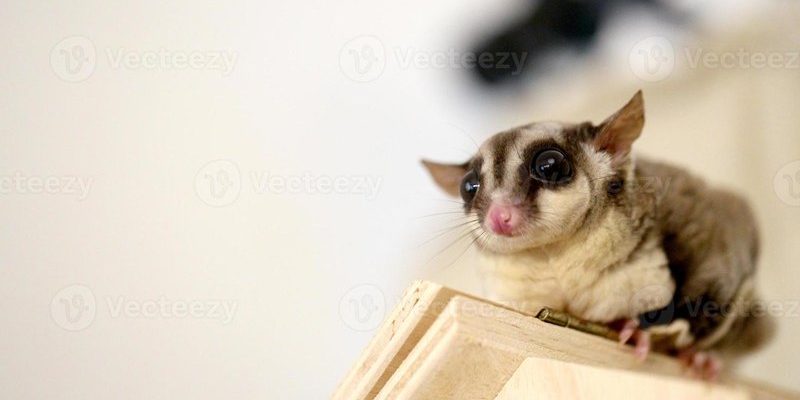
Think of sugar gliders like humans—they need time to adjust to new companions. Imagine meeting a new person at a gathering; you wouldn’t jump straight into a deep conversation. You’d likely spend some time getting comfortable with each other first. This article will walk you through the steps of introducing a new sugar glider to your current one so they can become buddies instead of foes.
Understanding Sugar Gliders’ Social Nature
Before diving into the introduction process, let’s talk about why sugar gliders are social animals. In the wild, they live in groups, relying on one another for companionship and social interaction. This means they’re used to having friends around, and they thrive on social bonding.
When you bring a new sugar glider home, remember that your existing pet might feel threatened or territorial. It’s like introducing a new roommate to your space—it can be a bit awkward at first. You want to ensure that the dynamics are right so both gliders can feel safe and comfortable in their environment.
Here’s how sugar gliders interact in the wild:
- They communicate through sounds and body language.
- They play and groom each other to strengthen bonds.
- They share food and sleeping spaces.
Being aware of these behaviors can help you set up their introductions for success!
Preparing for the Introduction
Preparation is key when introducing a new sugar glider. You want to create a calm environment where both gliders can feel comfortable. Here’s how to get started:
1. Separate Housing: Initially, house the new sugar glider and the existing one in separate cages. This allows them to adjust to each other’s presence without direct contact.
2. Familiar Scents: Exchange items like bedding or toys between the two cages. This helps them get used to each other’s scent, making the eventual meeting less intimidating.
Don’t rush this process! Think of it like preparing a meal; if you skip steps, you might end up with a disaster instead of a delicious dish.
Another important aspect to consider is the size of their cages. Make sure each sugar glider has enough space to move around comfortably. If they feel cramped, tensions may rise.
Gradual Introductions: The Key to Success
When the time feels right, you can start the gradual introduction process. Patience is crucial here! You wouldn’t throw two strangers into a small room and expect them to become friends instantly, right? Here’s a step-by-step approach:
1. Controlled Meetings: Start with short, supervised interactions. You can place a neutral territory, like a playpen, between them. This way, they can see and smell each other without direct contact.
2. Positive Reinforcement: Offer treats to both gliders during the interactions. This helps them associate each other with positive experiences. Just like people bond over sharing snacks!
Observe their body language closely. If they seem curious but not aggressive, that’s a good sign.
Recognizing Stress Signs
Keep an eye out for signs of stress in both sugar gliders. They can be delicate creatures, and you want to avoid overwhelming them. Some common signs of stress include:
– Hissing or Growling: This can indicate discomfort or fear.
– Rapid Breathing: If you notice this, it might be time to back off and give them some space.
– Barking: This vocalization can suggest agitation; it’s best to separate them if you hear it.
If things aren’t going smoothly, don’t panic. Sometimes, it just takes extra time for them to get used to each other. Think of it as a dance; both partners need to learn their steps before they can perform gracefully.
Creating a Shared Space
Once the initial introductions go well, it’s time to consider a shared space. This should be a safe area where both sugar gliders can explore and feel secure. Here’s how to make it work:
1. Neutral Ground: Choose a space neither sugar glider claims as their territory. This could be a play area or even a larger cage where they can roam freely together.
2. Hideaways and Perches: Use plenty of toys, hideouts, and branches to keep them entertained. They love to climb and play, which encourages bonding.
By creating a fun environment, they’re more likely to interact positively. Think of it as a playground; the more engaging it is, the easier it is to make friends!
Maintaining Peace After Introduction
Now that your sugar gliders are getting along, it’s essential to maintain that harmony. Regular interaction is key. Here are some strategies to keep the peace:
– Regular Playtime: Spend time with both sugar gliders together. This can help strengthen their bond and reassure them that they’re both loved equally.
– Routine Check-ins: Monitor their behavior over the next few weeks. If one glider begins to act aggressively, it’s time for more separation and smaller interactions.
Consistency will help them form a lasting friendship. It’s like building a house—you can’t leave it half-finished and expect it to stand strong.
Final Thoughts on Introducing Sugar Gliders
Introducing a new sugar glider to your existing one doesn’t have to be stressful. It’s all about patience, preparation, and reading their cues. Like any friendship, it takes time, but the rewards are worth it.
With a little effort, you’ll create a loving environment where both sugar gliders can thrive. Remember, every interaction can be a step towards a harmonious household. So take a breath, enjoy the journey, and soon enough, you’ll have two happy, healthy sugar gliders snuggling together in your home!

